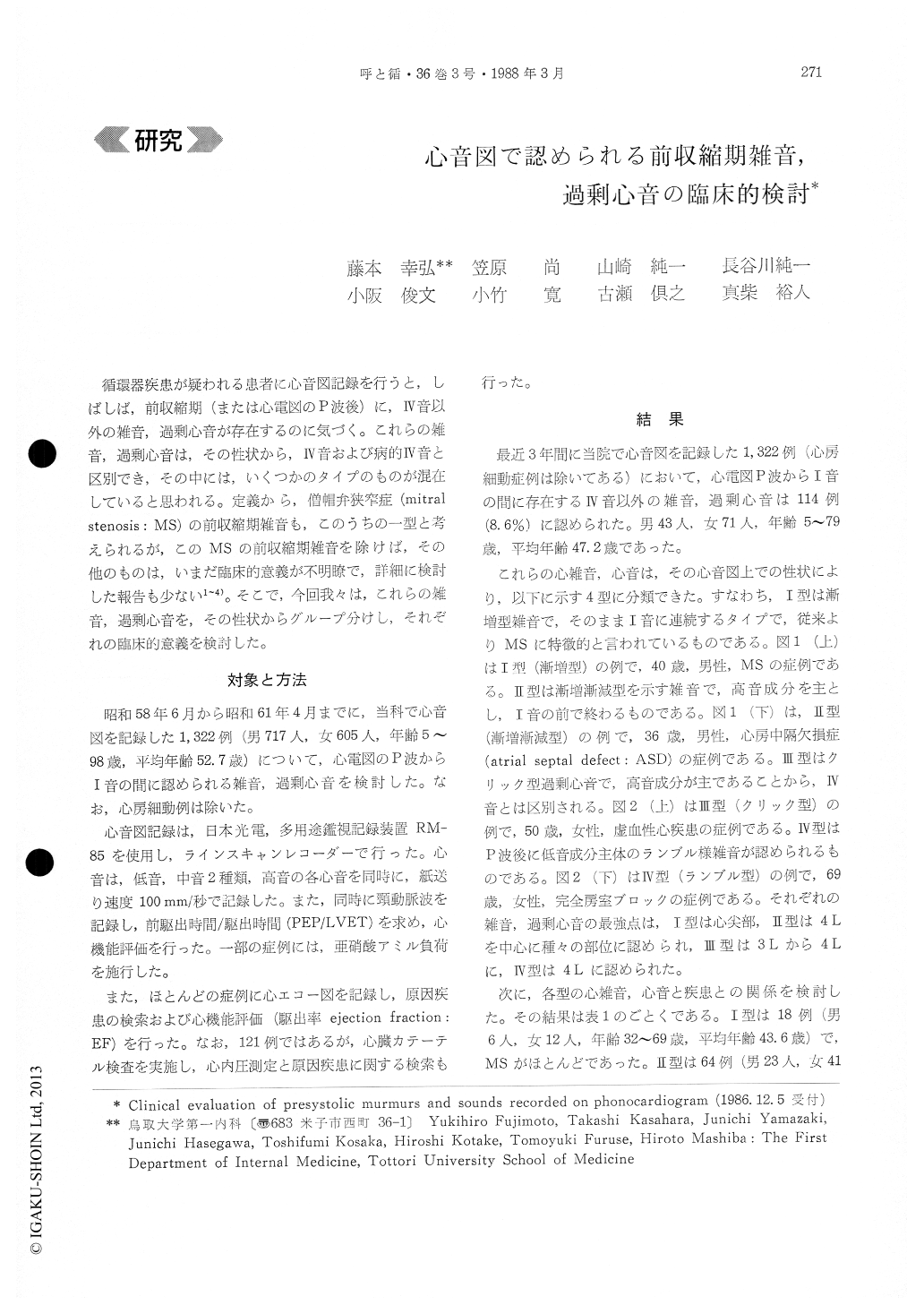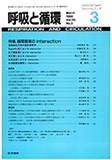Japanese
English
- 有料閲覧
- Abstract 文献概要
- 1ページ目 Look Inside
循環器疾患が疑われる患者に心音図記録を行うと,しばしば,前収縮期(または心電図のP波後)に,IV音以外の雑音,過剰心音が存在するのに気づく。これらの雑音,過剰心音は,その性状から,IV音および病的IV音と区別でき,その中には,いくつかのタイプのものが混在していると思われる。定義から,僧帽弁狭窄症(mitralstenosis:MS)の前収縮期雑音も,このうちの一型と考えられるが,このMSの前収縮期雑音を除けば,その他のものは,いまだ臨床的意義が不明瞭で,詳細に検討した報告も少ない1〜4)。そこで,今回我々は,これらの雑音,過剰心音を,その性状からグループ分けし,それぞれの臨床的意義を検討した。
The heart murmurs and sounds (exclusive of IV sound) existing between P wave and I sound was found in 114 (8.6%) cases out of 1322 cases and could be classified into 4 types according to specific proper-ties. Type I (crescendo type) was characteristic of mitral stenosis and increased with administration of amyl nitrate. Type IL (crescendo-decrescendo type) was found in atrial septal defect, mitral regurgitation and myocardial diseases as well as in healthy indivi-duals. It increased or remained unchanged with adiministration of amyl nitrate. Type I (click type) was found in myocardial diseases, collagen diseases and even in healthy individuals. Its response to administration of amyl nitrate was not constant. Of the cases which underwent heart catherterization in type III, many showed a rise in the left ventricular end diastolic pressure. Type IV (rumbling murmur type) was characteristic of the complete atrioventri-cular block.
Thus atrial blood flow overloading and a decline in the myocardial compliance may be accountable for heart sounds type II and type II, which involve vari-ous diseases and of which clinical significance is not clear.

Copyright © 1988, Igaku-Shoin Ltd. All rights reserved.


